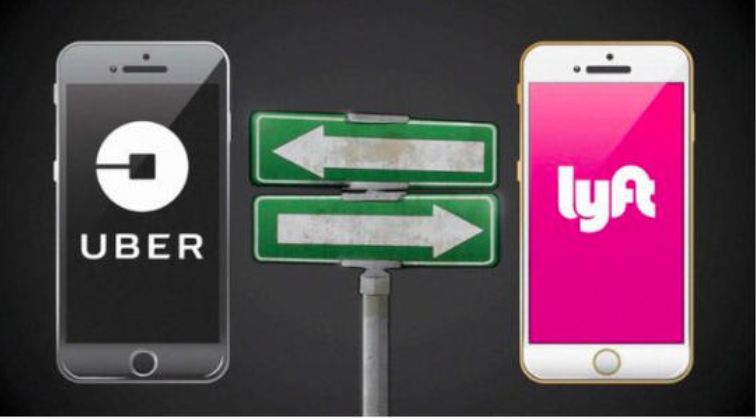Overview
As China’s largest mobile transportation platform, Didi recently submitted IPO documents to the US Securities and Exchange Commission. Barring unforeseen circumstances, Didi will be listed on the New York Stock Exchange, becoming another Chinese-funded company listed in the United States. However, among Didi’s shareholders, there are investors with deep overseas backgrounds, such as SoftBank Capital, Uber, and Vision Fund. From an estimated perspective, the market’s valuation of Didi is feared to reach $95 billion, and a company with a market value of tens of billions of dollars will be born. Based on Didi’s prospectus, it plans to allocate 30% of the IPO funds to international business, shared travel, electric vehicles, and autonomous driving. Therefore, overseas business and autonomous driving will become the key points of Didi’s business.
Overseas market, more imagination for investors
From Didi’s prospectus, it can be found that China’s mobile transportation business is the pillar of Didi’s revenue and profit. Especially after beating Uber in China, Didi’s dominant position in the domestic mobile transportation market is difficult to shake. However, Didi’s progress in the overseas market is relatively slow.
Between 2015 and 2017, Didi successively invested in several regional markets, and the investment objects were all local Internet transportation head companies, including Grab in Southeast Asia, Ola in India, and 99 in Brazil. However, two safety accidents in China in 2018 once placed Didi at the center of a storm. It had to slow down its pace of developing overseas markets and focus more on the safety field in China to ensure its stability in the domestic market. In the second half of 2019, Didi extended its tentacles to the Latin American market. It has already reached many markets, including Chile, Colombia, Costa Rica, Panama, Argentina, Peru, Dominican Republic, Ecuador, Mexico, and Brazil, covering ten major countries in South America. Its market share in most of the major Latin American markets is close to 50%. Didi’s market share in Mexico exceeds that of Uber, reaching 40%.In terms of the US market, it is currently dominated by Uber and Lyft, with a market share ratio of about 7:3. Uber owns 12.8% of Didi’s shares, which is a return from Uber’s exit from China and makes Didi their second largest shareholder. Didi, on the other hand, is an investor in Lyft. Therefore, the US market is not Didi’s main focus. Looking globally, Didi’s next target market should be Europe. Last year, Didi entered the Russian market, and the three major markets on the European continent – UK, France, and Germany – will become Didi’s main target markets for expansion. It is worth mentioning that, besides transportation, the growth potential of the food delivery business is also huge in overseas markets. Taking Uber as an example, the revenue from their food delivery business has grown from $772 million to $3.9 billion from 2018 to 2020, accounting for an increasing percentage of their overall revenue from 7.4% to 35%. Therefore, for Didi, the food delivery business will gradually become a new pillar of their overseas business.

Autonomous Driving, a Top Priority for Didi
As of Q1 2021, Didi has a fleet of over 100 autonomous driving cars, which are mainly based on Volvo’s XC60 and XC90 platforms with Didi’s own autonomous driving software and hardware systems installed. However, this scale cannot compare with Tesla, or even with self-owned fleets such as Google Waymo and Baidu, leaving Didi with a significant gap. Nevertheless, Didi previously stated that they hope to have 1 million autonomous driving cars operating on their platform by 2030. To achieve such a grand goal, production cars like the Didi D1, which are pushed to the market and not just for customers to try out, are the key to obtaining enough road and working condition data.However, from the perspective of Didi’s long-term development, whether or not it can make breakthroughs in autonomous driving is the key to its sustainable development. As Didi’s main competitors in overseas markets, especially in the United States market, Uber and Lyft have abandoned their autonomous driving plans. Uber was previously more aggressive in autonomous driving, hoping to realize commercialization by purchasing Volvo XC90 and installing its own autonomous driving kit. However, after a traffic accident related to its autonomous driving occurred, Uber slowed down its progress in the field. As for Lyft, it sold its entire autonomous driving division to Toyota for $550 million, partly to stem losses, and partly due to the predicament that autonomous driving cannot be commercialized in the short term. For Didi, the fact that these two companies have given up on autonomous driving leaves it as the only company still insisting on this technology in the field of mobility, which gives investors a lot of imagination; however, Didi should also fully recognize the difficulty of autonomous driving, which may far exceed initial expectations.
Currently, there is a polarizing trend in the global autonomous driving competition. The situation where start-ups were emerging like mushrooms has disappeared, and major manufacturers are more focused on L4-level unmanned driving technology and its commercialization in commercial vehicles or limited scenarios. In the long run, Didi’s competitors are no longer mobile ride-hailing companies such as Uber and Lyft, but technology companies such as Apple, Tesla, Amazon, and Google, traditional automakers or component companies such as General Motors Cruise, Ford Argo, and AMP Automotive, and even chip companies such as NVIDIA and Horizon Robotics, seeking the maximum benefit in the autonomous driving game through cooperation and coordination. In the field of autonomous driving for passenger cars in China, Baidu and Xiaoma Zhixing are in the forefront, and they are also Didi’s main competitors.
In this IPO, in addition to helping Didi raise enough funds to expand its overseas mobility business, the main focus of the funds will undoubtedly be on autonomous driving. After all, short-term commercialization of L4 is hopeless, and fewer and fewer companies can continue to invest in this field. But as long as Didi can fully utilize its strengths and integrate deeply with other enterprises, rely on Didi’s position in the field of mobility, start with limited scenario autonomous driving and gradually expand to more autonomous driving scenarios, Didi is facing a more favorable environment and less pressure than other OEMs. Whether Didi can take a further step in autonomous driving through IPO remains to be seen.
This article is a translation by ChatGPT of a Chinese report from 42HOW. If you have any questions about it, please email bd@42how.com.
